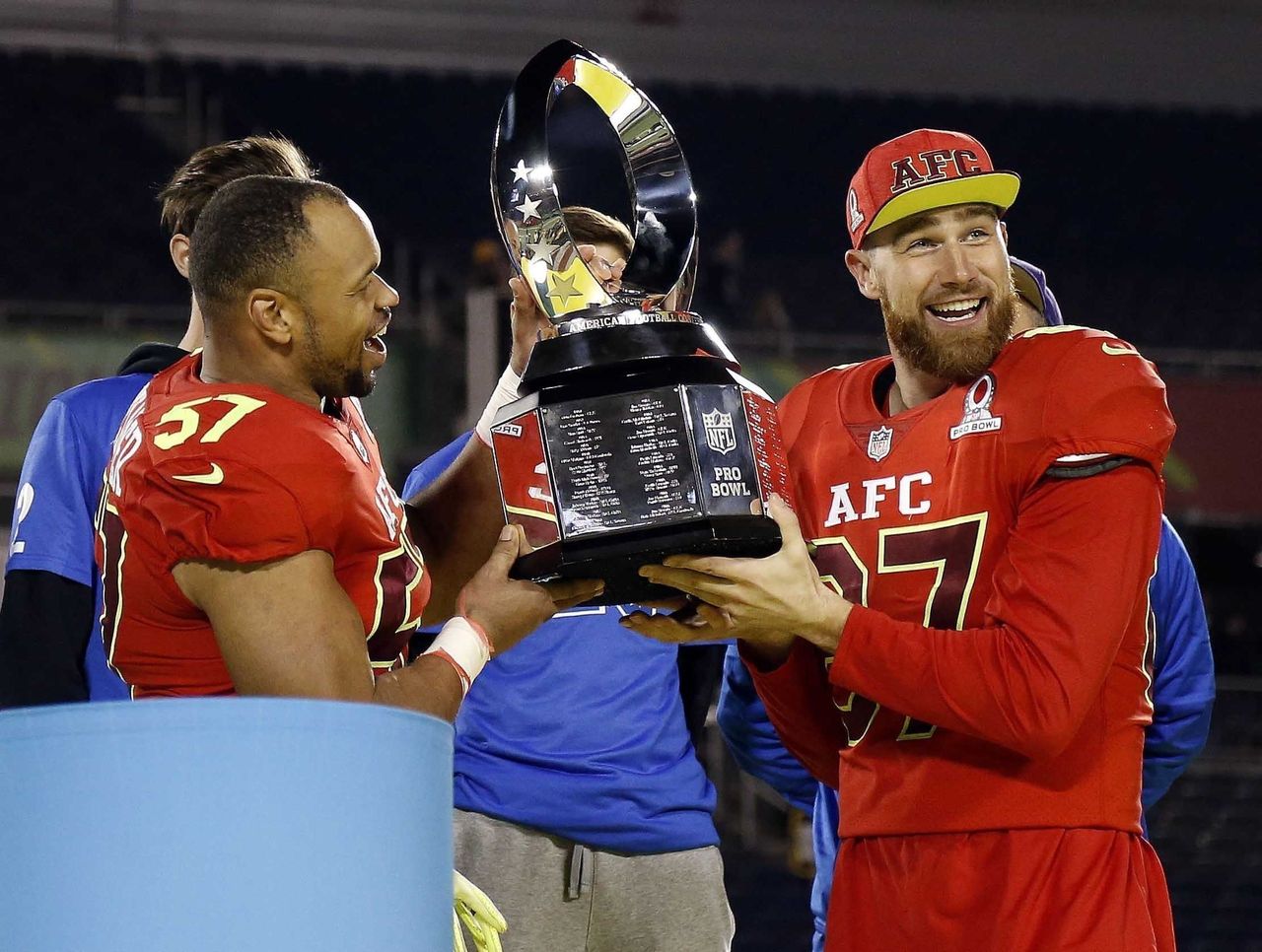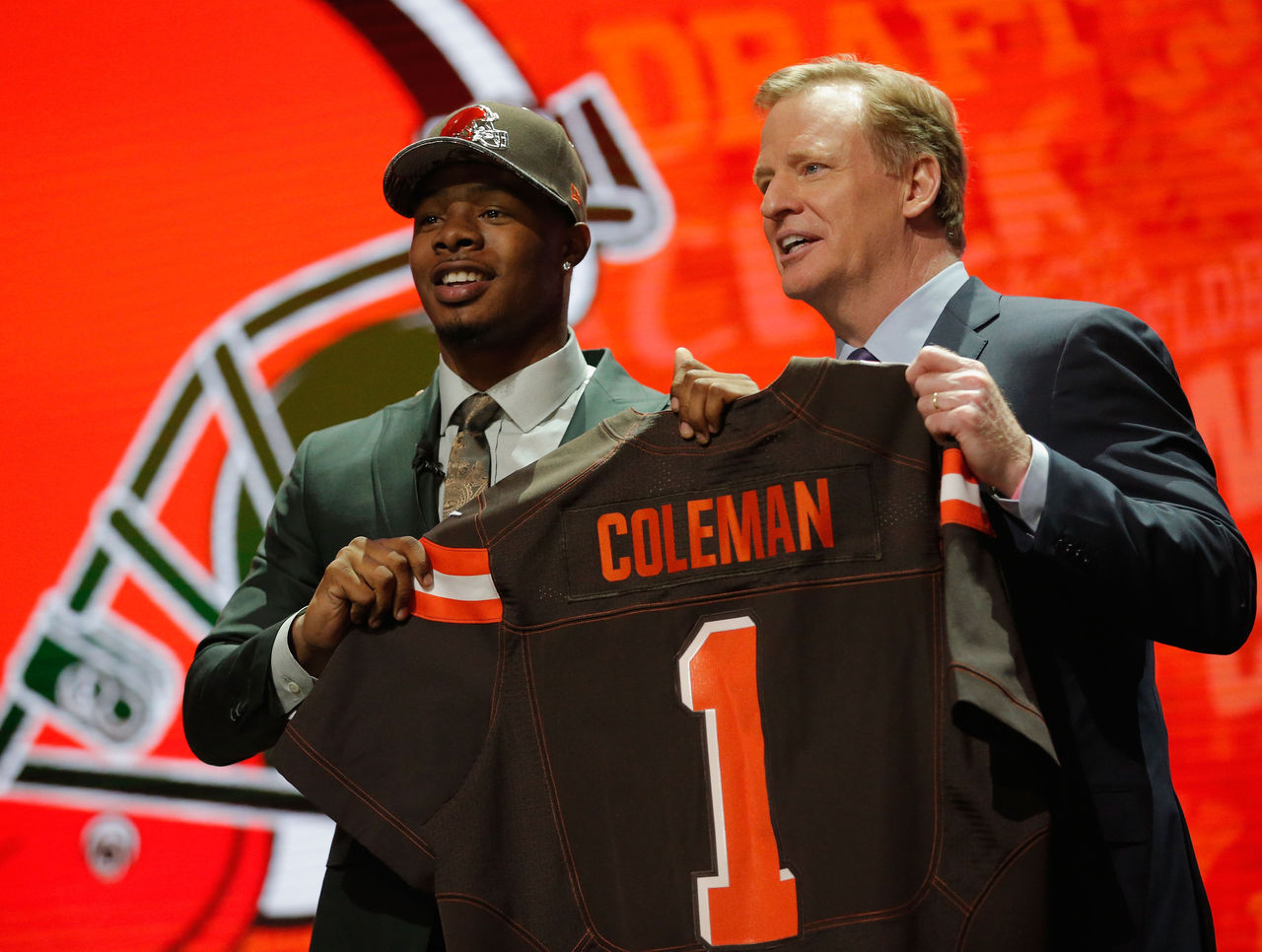What is an MFL10?: a primer for the uninitiated
Follow theScore's fantasy feed on Twitter (@theScoreFantasy) for the latest news, features and more.
If someone has ever asked, "Hey, have you heard of My Fantasy League?," they're not talking about their own Yahoo! or ESPN-hosted season-long league. My Fantasy League, or 'MFL,' or 'MFL10', is a draft-only fantasy football game with point-per-reception (PPR) scoring and growing popularity.
If your favorite parts of fantasy football include the researching and drafting of your team, and not necessarily the in-season maintenance, then an MFL10 is for you. Once your players are chosen, no waiver claims or trades can be made and your roster is set in stone. Before getting ahead of ourselves, let's break down how MFL10s work in detail.
What does the 10 in the name mean?
It refers to the entry fee required from each player - $10 USD. In an MFL10, the winner is awarded a payout of $100, with the second-place finisher receiving a free entry for the following year. The remaining teams, from third place on down, receive nothing.
Higher-stake formats exist as well; an MFL25 pays out $200, an MFL50 pays out $400, and an MFL100 awards $800 to the winner, with smaller cash prizes awarded to the second-place finishers as well. The third-place owner in each format receives a free entry for next year. Other than the entry fee and prize structure, everything about the various contest types is the same.
For obvious reasons, an MFL10 is the most accessible contest type and is what we'll refer to here.

Do I need to know anyone to play?
No, once you've deposited the required entry fee, you are free to join a public league, which has space for 12 owners. Alternatively, private leagues are also an option for groups of players who wish to compete against each other.
How big are the rosters?
Twenty roster spots are assigned to MFL10 teams. There isn't a set number of players you need to draft from each position, but a weekly lineup consists of the highest scorers from the following positions:
QB, RB, RB, WR, WR, WR, TE, FLEX (RB/WR/TE), DEF
How you draft your team forms a significant portion of your strategy. Do you play it safe with three quarterbacks, or proceed with only two, knowing that no matter how many of your passers have great weeks, the score of only one of them will count?
If you've nailed down a pair of elite wide receivers early in a draft, for example, do you go light at the position the rest of the way, hoping for good health and a sustained high level of performance from those players?
On top of preparing for the inevitable injuries, owners need to do their best to manage bye weeks, requiring at least one spare at each position. There's nothing worse, or as detrimental, as putting up a zero at a position in a week simply as a result of not having an available player. The MFL site makes this information readily available, displaying the bye week of each player in the draft pool.
Defining "draft only" and "best ball."
The "best ball" format automatically uses your highest scorers from a given week. If you draft three quarterbacks, for example, the player with the best score is your representative at the position. There's no need to agonize over start/bench decisions; your top performer is automatically chosen.
If you have drafted eight wide receivers, your top three are automatically included each week, with a fourth possibly listed in the 'FLEX' spot, depending on the performance of your running backs and tight ends.
As noted earlier, there are no transactions or player movement like there are in season-long fantasy leagues. The 20 players you select are yours for the entirety of the season. If one of your players hits the injured reserve in Week 1, you're effectively down to 19 for the rest of the season. There's no scouring the waiver wire to find a replacement.
For this reason, it's well worthwhile to draft rookies or backups expected to begin the season with minimal roles but the opportunity to take over as a starter. It's okay to have these players stashed as "reserves" for the first few weeks of the season in preparation of potentially big weeks coming near the end of the year.
Your totals from Weeks 1 through 16 (Week 17 isn't considered) are added together, and the two participants with the highest point totals at the end of the season receive prizes. There are no weekly head-to-head matchups; only the total score at the end of the season matters.

How does the draft work?
The draft is conducted online, but not in the same way traditional season-long leagues operate. You're notified via email when it's your turn to pick, and you then have eight hours to do so. Depending on the speed with which a league's participants choose their players, a MFL10 draft can go on for days or even weeks.
It is possible to create a pre-draft list which will prevent a potentially unwanted player from automatically being chosen for you should your time limit expire.
OK, I'm interested. When can I enter a league?
According to MyFantasyLeague.com, MFL10s for the 2017 season can be drafted beginning in mid-February. Teams can be created up until a few days before Week 1, given the length of time it can take for a draft to conclude.
Why would I want to pick a team so early? Free agency and the NFL draft haven't happened yet! There's not even a schedule!
Well, to each their own. If you feel like drafting a team shortly after the Super Bowl has been crowned, chances are you'll find plenty of like-minded participants willing to comprise a public league.
At the very least, every owner is in the same boat with regard to the available information, or lack thereof. If you enter an MFL10 drafting, say, Feb. 20, owners have only their own educated guesses as to where the 2017 crop of rookies and free agents will ply their trades. They'll be caught off guard by any unexpected retirements or off-season injuries.
There's a good chance an early drafter's 20-man roster will be whittled down to 18 or 19 active players before Week 1 even kicks off. Obviously, drafting closer to the start of the season helps remove a lot of uncertainty, but there is appeal to the increased level of difficulty.
Drafting is fun, and the element of offseason chaos allows for a level playing field regardless of experience or expertise.